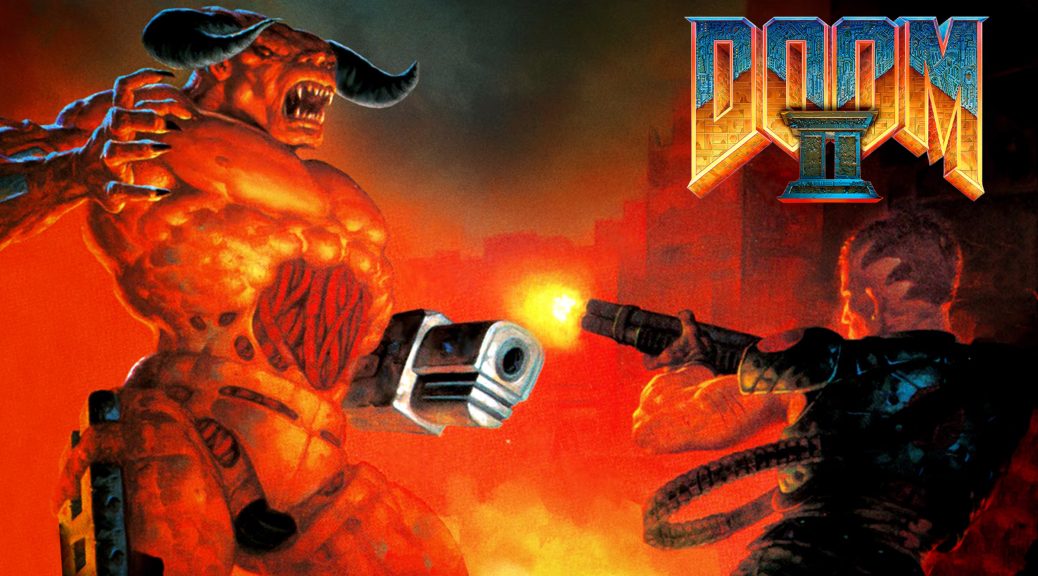
DOOM II
DOOM II was the last major gap in my DOOM-playing history, and apparently that was for good reason. The game is in a curious position. It’s the kind of sequel that functionally makes the original obsolete, as it’s literally the exact same game but with more stuff. And since the lifeblood of classic DOOM is its passionate modding community, the extra variety and balance provided by those tools make DOOM II a success on some level. Unfortunately, a game’s quality is not determined simply by listing all of its features. In addition to being a textbook example of a sequel that’s coasting on the achievements of its predecessor, the actual product that id Software put together is so much worse than their first outing. It may in fact be the biggest drop in quality for an “expansion pack sequel” that I’ve ever seen.
Most of the blame can be directed squarely at the level design. The game is indecisively subtitled Hell on Earth, which is a concept that it does next to nothing with, as the environments range from functionless sci-fi labyrinths to cubist interpretations of suburban houses. Ordinarily, levels like these are designed from a pure gameplay perspective, except these are also terrible for gameplay. Techniques that were used to uncover secrets in the first DOOM are mandatory here. Invisible teleporters, nondescript walls that turn out to be elevators when touched, forward paths that force the player to take damage, and copious use of the engine’s faux-jumping physics are all regular sights. Most egregiously, the levels are so obtuse and circuitous that nearly every one will come to a screeching halt at least once while you examine every inch of the area for the obscure location of a required door key.
I almost wish this game had just been a straightforward re-release of DOOM with the new features integrated. Outside of the level design and general lack of creativity, the only issue I have that’s unique to this installment is that the music is often annoying and ill-fitting. Yeah, the limited 3D aiming felt weird and unintuitive even for the time, but that was there from the beginning and was still the best option available. On paper, this is a strictly better version of the gameplay formula that rightfully became a perennial sensation. The new enemies offer much more varied options for mid-tier encounters, the player’s weaponry is famously satisfying to wield, and there are regularly scenarios where you’re allowed to cut loose against the largest enemy crowds the genre had yet seen. Unfortunately, the overall composition is much more tedious and frustrating on average.